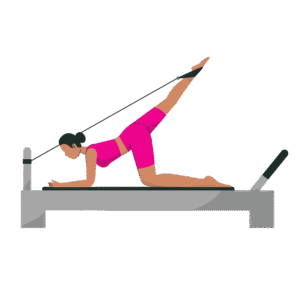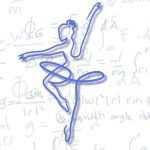Content by Swetlana Goswami, and design by Maya Haridas for En Avant Summer 2025
When you watch a dancer performing on the stage, especially a ballet dancer, it often looks like an illusion of grace, power, and precision flowing effortlessly together. But what happens behind the scenes is months and years of rigorous training. Dancers nowadays understand that what they do off stage is just as crucial as what they perform on stage. For ballet dancers and other movement performers, the goal isn’t just about flexibility, but also functional strength – the kind that supports explosive movements, protects joints, and prevents long term injury.
In recent years, there has been a major shift in how dancers train: from focusing purely on technique to incorporating complementary training methods that enhance performance, build resilience and most importantly prevent injuries. These methods bridge the gap between artistry and athleticism, allowing dancers to condition their bodies beyond choreography, address weakness and extend their performance lifespan.
Pilates
 Pilates is said to be one of the most popular and dance friendly methods. This complementary training method was originally developed by Joseph Pilates in the early 20th century specifically for dancers, emphasizing controlled movement, breath, and body awareness. For dancers, Pilates helps in developing core strength, pelvic stability, and alignment—all crucial for balance, turnout, and safe landings.
Pilates is said to be one of the most popular and dance friendly methods. This complementary training method was originally developed by Joseph Pilates in the early 20th century specifically for dancers, emphasizing controlled movement, breath, and body awareness. For dancers, Pilates helps in developing core strength, pelvic stability, and alignment—all crucial for balance, turnout, and safe landings.
Pilates also promotes spinal articulation and flexibility, helping dancers achieve greater range of motion while protecting their backs. Equipment like the Reformer are used for low-impact resistance training that builds strength without bulk—perfect for dancers who want to remain lean but powerful.
Moreover, Pilates teaches dancers how to recruit the correct muscles during movement. This kind of training is key in preventing compensation patterns that often lead to injury.
Strength Training
 The days are gone when dancers feared lifting heavy and bulky weights. Today, strength training is recognized as crucial for injury prevention and magnificent performance. The goal is not to build bulky muscles but to develop muscular stability, support health, and increase power.
The days are gone when dancers feared lifting heavy and bulky weights. Today, strength training is recognized as crucial for injury prevention and magnificent performance. The goal is not to build bulky muscles but to develop muscular stability, support health, and increase power.
Exercises like squats, lunges, and deadlifts target the hamstrings, and are all crucial for jumps, lifts, and stability en pointe. Upper- body workouts are equally important, especially for partnering work in dance performances.
Even light resistance work with bands or bodyweight can yield major benefits. The key is functional strength—building a body that supports the demands of dance, rather than working against it.
Yoga
 It is an ancient practice that combines physical postures, breathing techniques, and mindfulness to promote balance between the body and mind. Originating in India over 5,000 years ago, yoga has evolved into a global movement that supports flexibility, strength, mental clarity, and overall well-being
It is an ancient practice that combines physical postures, breathing techniques, and mindfulness to promote balance between the body and mind. Originating in India over 5,000 years ago, yoga has evolved into a global movement that supports flexibility, strength, mental clarity, and overall well-being
For dancers, yoga offers numerous benefits that directly enhance performance. It improves flexibility safely by lengthening muscles and increasing joint mobility, which is essential for high extensions and fluid movement.
Yoga also builds core strength and balance, helping dancers maintain control during turns, jumps, and balances. Beyond the physical, it supports mental focus, body awareness, and breath control—key elements for stage presence and managing performance anxiety. Yoga gives dancers the tools to move more efficiently, reduce tension, and maintain a healthy, sustainable dance career.
Cross Training
 Cross-training involves different types of physical activity outside of a dancer’s regular technique classes. Instead of only focusing on dance-specific movement, cross-training builds overall strength, flexibility, and coordination by using methods like swimming and cycling. For dancers, it helps correct muscle imbalances, reduces the risk of injuries, and boosts performance by challenging the body in new ways. It also gives tired muscles a break from repetitive movement patterns while keeping fitness levels high. Whether it’s building core stability or increasing stamina with cardio, cross- training supports a dancer’s long-term health and longevity.
Cross-training involves different types of physical activity outside of a dancer’s regular technique classes. Instead of only focusing on dance-specific movement, cross-training builds overall strength, flexibility, and coordination by using methods like swimming and cycling. For dancers, it helps correct muscle imbalances, reduces the risk of injuries, and boosts performance by challenging the body in new ways. It also gives tired muscles a break from repetitive movement patterns while keeping fitness levels high. Whether it’s building core stability or increasing stamina with cardio, cross- training supports a dancer’s long-term health and longevity.
To conclude
Today’s dancers are more than performers; they’re artistic athletes, sculpting their craft with equal parts expression and intention. They keep their bodies like well-oiled machines, requiring daily maintenance and care. Ballet dancers, in particular, have embraced a more holistic approach to training, recognizing. that true artistry is built on a foundation of strength, function, and health. From Pilates to strength circuits, yoga to cardio, every element of cross-training serves a purpose: to create a body that moves efficiently, performs consistently, and recovers gracefully.
Behind every graceful movement is a foundation of strength and stability. Complementary methods of training aren’t just additions to a dancer’s routine, they are essential tools that transform effort into elegance. As the dance world continues to evolve, so too does the understanding that peak performance requires more than talent, it demands a body that is balanced and ready. Off stage training isn’t just an option, it is essential, because in the end, it’s not just about how high you leap or how long you turn, but how long you can keep dancing, and how fully you can live in the movement.








Leave a Reply